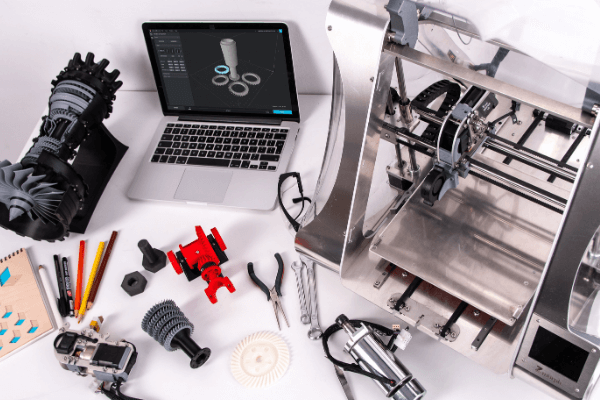Rapid prototyping is one of the most widely used technologies in the industry for manufacturing material samples and optimizing the design of final products. Its use supposes an important saving of resources for the companies. In this post we explain what this technique consists of and which are the most used varieties.
What is rapid prototyping and what is it for?
It is a procedure for creating objects with morphological or functional characteristics similar to those of certain products. It can be used with various materials, such as metals, plastics or ceramics. The main objective is to test the compounds in the simplest possible way before putting them on the market.
The rapid prototyping of materials helps to avoid errors and guarantee the quality of the final products in sectors such as medicine, scientific research, industry or construction. Fortunately, technological advances make it possible to increase the speed of the process more and more and reduce the costs associated with it.
Types of rapid prototyping
Depending on the intended purpose, we can distinguish the following types of rapid prototyping:
Rapid design prototyping
It is used to test the aesthetic and ergonomic aspects of objects, by evaluating properties such as color, curves, straight lines, pores or surface finishes.
Geometric rapid prototyping
It consists of analyzing the products from a spatial and geometric point of view, that is, evaluating factors such as shapes, proportions or tolerance between the different pieces that must fit together in the final compounds.
Functional rapid prototyping
It focuses on studying the behavior patterns of different materials. This is essential to determine for sure what the possible functions and uses of each element are.
Technical rapid prototyping
It analyzes the set of benefits that objects can provide globally, including their compatibility with other products and the delimitation of their technical characteristics.
Main rapid prototyping techniques
There are different techniques to carry out the rapid prototyping processes of materials, each one based on a specific technological development. We review the most common procedures:
Rapid prototyping with 3D printing
Three-dimensional printing or rapid 3D prototyping is the most advanced and fastest method. Given the evolution of materials and printers, it offers great possibilities for action. We can distinguish the following types:
Stereolithography (SLA) and Selective Light (DLP)
It consists of the manufacture of objects by applying successive layers of photosensitive resin and ultraviolet radiation on the base of the material. If a beam is used, the technique is known as stereolithography. On the other hand, if a UV light lamp is used, it is 3D rapid prototyping by selective light.
Selective laser sintering (SLS)
It is an additive manufacturing method by superimposing layers of special powders, usually nylon, which become a solid support when melted by a powerful laser beam. The process produces very resistant products with a porous finish.
Molten Deposition (FDM)
It is the cheapest 3D rapid prototyping technique and, therefore, the most common in private printers. However, the resistance and finishes of the resulting objects are not as good as in the rest of the procedures.
Triple injection (Polyjet)
It is used to generate aesthetic prototypes, but not functional ones. It differs from previous systems in that it does not work in layers, but rather works by combining small drops of different materials and colors with each other, which end up solidifying by means of ultraviolet light.
Rapid prototyping with laser cutting
Laser cutting is a fairly inexpensive and flexible rapid prototyping technology, capable of generating objects from various materials, including plastics, woods, fabrics, and metals, which can even be folded to combine with each other. It consists of cutting pieces of the original material with a beam of laser light. It is suitable for both short runs and mass production.
Rapid prototyping with CNC
Finally, CNC or machining is a very common rapid prototyping technique in the metallurgical industry for years. In this case, the objects are obtained by mechanically subtracting a sample from a larger part. The main drawback is that it is a much slower process than the previous ones.
In conclusion, it is important to keep in mind the value of rapid prototyping as a great solution to save costs and optimize final production. If you want to stay informed about current affairs in the industrial sector, we invite you to continue visiting the Infinitia blog.

